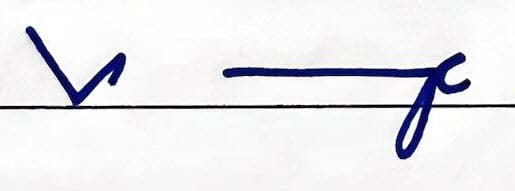LLTT Newsletter - September 2024

LLTT - September 2024

Welcome!
In this issue, we’ve got a good list of twenty shorthand tips with associated quotes to help you on your journey. Additionally, we’re going to look at the topic of collocations - groups of words that are typically seen together. Familiarity with them can sometimes assist during an exam or anytime you’re taking notes.
Let’s go!
Twenty Shorthand Tips
Some of these tips may be familiar, while others might represent new insights. Regardless, there is value in revisiting even well-known advice. Often, the act of being reminded is just as crucial as learning something for the first time. These reminders can reinforce good habits, reignite motivation, and even shed new light on practices you may have overlooked. Whether you discover fresh ideas or are just refreshing your memory, each tip offers an opportunity to enhance your approach to Teeline.
1.Mastery of Fundamentals is Key: The foundation for high speed in shorthand is a strong grasp of the system's basic principles. This means revising the rules on a regular basis, working to master special outlines and useful word groupings, and being able to write outlines without hesitation.
"The key to speed is accuracy. Accuracy comes from mastery of fundamentals."
2.Early Focus on Speed Can Be Detrimental: Don't rush into speed practice before you've built a solid foundation. Trying to write quickly without accuracy leads to sloppy outlines and difficulty in transcribing.
"Haste makes waste."
3.Consistent Practice is Crucial: Regular, dedicated practice is essential for developing speed and accuracy. This includes, but is not limited to, trying a variety of exercises, taking dictation at varying speeds, and transcribing notes.
"Practice isn't the thing you do once you're good. It's the thing you do that makes you good."
4.Embrace Repetition, But Strategically: While practising new material is important, repeating previously written passages can be highly effective for improving speed and accuracy. Focus on writing the same material multiple times, gradually increasing speed.
A good reading resource: "The Power of Habit" by Charles Duhigg - This book discusses the importance of repetition in skill development.
5.Quality Over Quantity: Strive for neat, well-formed outlines. Do not sacrifice your accuracy for speed — it's better to write fewer outlines that you can actually read than many illegible ones.
"Perfection is not attainable, but if we chase perfection we can catch excellence."
6.Develop a Light, Fluid Hand: Avoid gripping the pen too tightly, as this can lead to fatigue and slower writing. Practice writing with a lighter touch, allowing the pen to flow more smoothly across the page. Also: see tip #19 below.
"Like water, be gentle and strong. Be gentle enough to follow the natural paths of the earth and strong enough to rise up and reshape the world."
7.Dictation: A Stepping Stone to Speed: Graded dictation practice is essential for training both your brain and hand to work in unison at higher speeds. Start with slower dictations and gradually increase the pace. However, do not discount working at slower speeds for longer periods of time. Don’t get stuck in thinking that dictation is only about increasing your speed. See “The Eight Stages of Writing Shorthand”.
“Continuous improvement is better than delayed perfection.”
8.Don't Overdo Grouping, Especially Early On: While word groupings will contribute to your speed, they should be used carefully in the initial stages of learning. Beginners tend to want to group everything, which can lead to confusion and inaccuracies. There are countless ways to employ simple (but highly-effective) two-word groupings (I am, you will, there is) that will significantly transform your writing. Build your fluency with these first. See the link in tip #1.
"Simplicity is the ultimate sophistication."
9.Visualise Outlines for Enhanced Recall: Mentally thinking about outlines at odd times of the day can definitely improve your accuracy and speed. This mental rehearsal prepares your hand to form the outlines more swiftly. This is, perhaps, one of the most underutilised strategies employed today.
"Visualisation is daydreaming with a purpose."
10.Develop "Reserve Speed" for Challenging Situations: This is a useful tip, especially when training for exams. You must aim for a speed comfortably higher than what you regularly require. This creates “reserve capacity” which allows you to handle unexpected bursts of speed, or challenging words, without compromising accuracy.
"It's not the daily increase but daily decrease. Hack away at the unessential."
11.Embrace Transcription as a Learning Tool: Thoroughly transcribe your notes, even if it seems tedious. This process highlights areas for improvement, reinforces correct outlines, and strengthens your understanding of the system. More importantly, once you’ve identified your trouble spots, work to correct them.
"I hear and I forget. I see and I remember. I do and I understand."
12.Read Shorthand Regularly: Just like reading improves writing in longhand, reading well-written shorthand exposes you to different styles, reinforces outlines, and helps internalise the flow of the system.
"Read a thousand books, and your words will flow like a river."
13.Utilise a Variety of Resources: Take advantage of materials that help you to improve your working shorthand vocabulary and explore different writing styles.
“The person who moves a mountain begins by carrying away small stones.”
14.Seek Guidance from Experts: Don't hesitate to seek help from experienced shorthand writers. They can provide personalised feedback, identify weaknesses, and offer valuable insights for improvement. You can contact us here.
"If I have seen further, it is by standing on the shoulders of giants."
15.Analyse and Address Weaknesses: Regularly assess your shorthand writing to pinpoint areas for improvement. If you are to improve, you must focus on strengthening those specific areas of weakness through targeted practice.
"The greatest discovery of all time is that a person can change his future by merely changing his attitude."
16.The Importance of Mental Agility: High-speed shorthand requires more than just mechanical skill; it demands focus, concentration, and the ability to process information rapidly.
"The mind is not a vessel to be filled, but a fire to be kindled."
17.Shorthand as a Tool for Personal Growth: Studying shorthand can cultivate valuable skills beyond writing, such as discipline, attention to detail, and the ability to work under pressure.
"Every skill you acquire doubles your odds of success."
18.The Power of Perseverance: Achieving high speed in shorthand takes time and dedication. Don't get discouraged—consistent effort and a positive mindset are crucial for success.
"Patience and perseverance have a magical effect before which difficulties disappear and obstacles vanish."
19.Value of Good “Tools”: Seek out a pen that really works for you. Secret: It’s going to be different for everyone. There are also many differences between paper types. Experiment and find a combination that facilitates smooth and efficient writing with little to no bleed-through.
"A bad workman blames his tools."
20.Understanding the "Why" Behind the Rules: While memorising theory is important, striving to understand the reasoning behind them can lead to a deeper and more intuitive grasp of the system, ultimately aiding in speed development.
"They who have a why can bear almost any how."
Which one was your favourite? Let us know!
Collocations
Collocations is just a fancy term for groups of words that occur together more often than would be expected by chance. While collocations can involve various parts of speech, they themselves are not a grammatical category. They're more about word usage and idiomatic expressions in a language.
Collocations can be different types of word combinations, such as:
Adjective + noun: "heavy rain," "strong coffee"
Verb + noun: "make a decision," "take a walk"
Adverb + adjective: "deeply concerned," "highly unlikely"
Verb + adverb: "apologise sincerely," "whisper softly"
Noun + noun: "a round of applause," "a surge of emotion"
These word combinations often have a meaning that's more specific or slightly different from the individual words. They're an important part of fluent, natural-sounding language use.
Here are a few examples:



Collocations can significantly assist both your note taking and transcription efforts. For students taking exams, recognising common word pairings can allow you to anticipate what's coming next, potentially increasing your writing speed and accuracy. In journalism, where rapid (and accurate) note taking is crucial, knowledge of collocations can be invaluable. For instance, a journalist familiar with common structures should be in a position to quickly capture phrases such as "breaking news" or "economic downturn", as opposed to processing each word individually.
Understanding collocations can help you to get a better “GRIP” on your notes:
Group words more efficiently
Reduce cognitive load when transcribing
Improve comprehension and recall
Predict upcoming words
That’s it for this month. Thanks for reading! Be sure to visit us at the LLTT Website, YouTube, Facebook, Instagram, Quizlet and Soundcloud.
If you’re looking for Teeline reading practice, Skill Building Through Reading 📗 - is available for purchase online.
Much work (and ❤️!) has gone into this 48 page, 6”x9" softcover book:
Five 5️⃣ carefully selected passages: Improve your sight 👁️ recognition of outlines and word groupings.
Dual Format: Each passage includes both printed Teeline and the longhand ✍️ transcription.
Proven Learning Approach: Reading printed 🖨️ shorthand is a method long-favoured by skilled practitioners.
Whether you're a student, journalist, or professional seeking to improve your note taking, this book will be a valuable addition to your Teeline learning resources.
To order, please visit the book’s landing page or respond to this email with any questions.
We have been considering releasing this as a PDF as well if there is enough interest. Please contact us to cast your vote: https://www.letsloveteelinetogether.com/contact-us.
If you find this newsletter helpful, please help us spread the word and forward to a friend!
A Parting Thought

Teeline History -

"Don't Get Worried. Don't Get Stressed. Let's Love Teeline Together."

Add a comment: